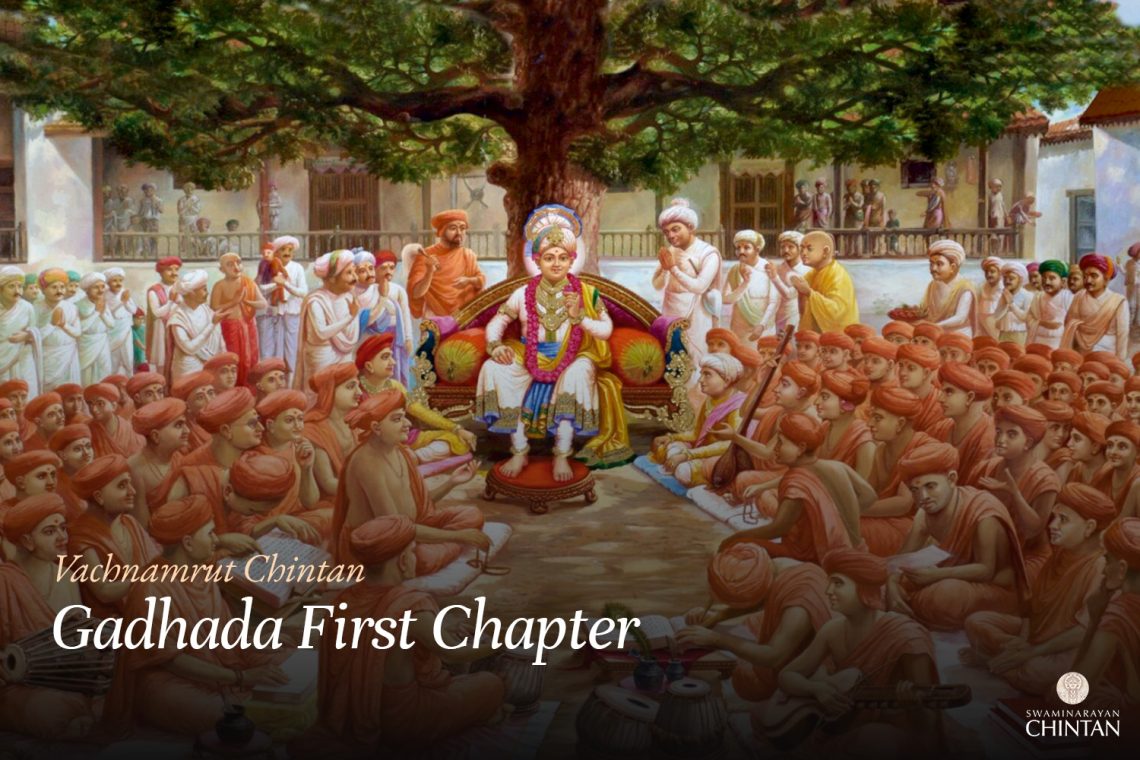Central Insights:
- The creation and the destruction of the sky and the different kinds of strengths in God like knowledge, etc.
Key Points:
- The 5 elemental skies and “Chidakash” are different
- “Chidakash” has no creation or destruction
- Through the support of God’s powers such as knowledge, those internal power activated in soul.
Explanation
In this discourse, the question posed is about the process of creation and dissolution of space. Maharaj explains the method and clarifies that physical space and the all-encompassing chidākāśa are different. Only physical space undergoes creation and dissolution; chidākāśa is eternal and does not undergo creation or dissolution.
How does the suṣumnā reside within and outside the body? Maharaj explains that as the universe exists externally, similarly, it exists in the body. The difference is that in the body it is limited, while in the universe it is vast. Upon the end of the tongue, one reaches the end of Varuṇadeva in the universe. When attachment to the tongue ceases, one transcends the illusion of Varuṇadeva’s realm and the water barrier. It is also necessary to correlate this with Vach.G.P. 12, where Maharaj states that understanding the twenty-four elements frees one from their bondage. Which elements? Especially those within one’s own body. By knowing the limitations, flaws, weaknesses, and materiality within, one becomes free from the twenty-four elements of the universe. Because there is a similarity between the body and the universe, conquering the elements of the body also conquers the elements of the universe. However, conquering external elements does not automatically conquer internal ones. For example, Rāvaṇa, Hiraṇyakaśipu, etc., conquered the universe and subdued the gods, but they were defeated by their internal elements or emotions or faults. Therefore, by conquering internal elements, the external are also overcome. Just as the universe contains earth, water, etc., the body also contains these elements. Just as the suṣumnā resides in the body, it also exists in the universe. Maharaj shows in the Vachanamrut that it extends from the heart to the brahmarandhra. By reaching the end of it, one attains the deity named Vaishvānara in the Śiśumāra chakra. Beyond that is a continuous path of light leading to the abode of God. By reaching the end of the suṣumnā, one attains the end of the path to liberation.
Which state dissolves first? Answer: The state into which one merges dissolves first. The dissolution of the other two states follows in the order of sattva, rajas, and tamas.
Svayamprakāśānanda Swāmi asked about understanding the faculties of knowledge, action, and will in God. Maharaj answered that the result of sattva-dominant actions is the waking state. The result of rajas-dominant actions is the dream state. The result of tamas-dominant actions is the state of deep sleep. When the soul enters deep sleep, its knowledge, actions, and desires disappear, and it becomes inert like a stone. Then God awakens the soul with His faculty of knowledge and imparts all actions. This is called God’s faculty of knowledge.
By His faculty of action, God instills inspiration in the heart of the soul. This is known as His faculty of action. Through His faculty of will, God supports the desires arising within the soul. Therefore, the soul can have desires. The soul’s knowledge, action, or will initially emerge from God’s faculties. Once knowledge, action, and will have arisen, guiding them on good or bad paths depends on the efforts of the soul. Just as a vehicle’s petrol provides power and its steering determines direction, similarly, God’s faculties are like the petrol, and the movement and steering are to be understood as the faculties of the soul.
Glossary
| Brahmarandhra – The crown chakra, representing the endpoint of the suṣumnā in the body. |
| Chidakash – Pure consciousness space |
| Gyan-shakti – The power of knowledge One of the three divine powers through which God knows everything; connected to awareness, understanding, and spiritual insight. |
| Ichchha-shakti – The power of divine will The divine desire or intention behind all creation and actions of God; nothing happens without His will |
| Kriya-shakti – The power of action The energy by which God performs all activities in the universe, from creation to dissolution. |
| Rajas – Passion, activity, and attachment |
| Sattva – Purity, goodness, and harmony |
| Shishumar Chakra – Celestial Pathway A divine path in the universe representing the alignment of the cosmos. |
| Sushumna – The central subtle nerve channel in the spine It is described as the main path through which the soul exits the body at the time of death, leading toward liberation if directed toward God. |
| Tamas – Darkness, ignorance, and inertia |
| Vaishvanara – The all-pervading fire element or cosmic digestive power Maharaj refers to it as the subtle fire that remains within the body and is essential for maintaining life and the inner functioning of the body. |

